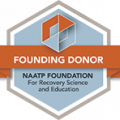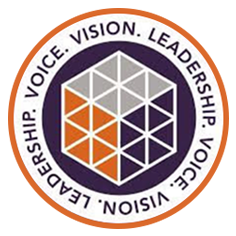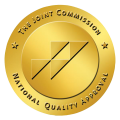Drug addiction is a significant public health issue that affects millions of individuals globally. Addiction treatment is an essential step for individuals struggling with substance use disorders, addressing both physical and psychological dependencies.
Understanding the various substances that lead to addiction, their effects on the body and mind, and the path to recovery is crucial for those affected. The brain’s reward system plays a pivotal role in addiction, as substances like crystal meth, alcohol, and nicotine trigger intense pleasure responses that lead to compulsive use. This article dives deep into the most addictive drugs, the science behind addiction, and the support available for those seeking to heal.
What Makes a Drug Addictive?
At the core of addiction lies the concept of dependence, which refers to the body’s physical and psychological reliance on a substance.
Several factors contribute to why certain drugs are more addictive than others. Substances that produce rapid effects, such as heroin or cocaine, are more likely to create a pattern of abuse due to the intense high they induce. This immediate gratification can lead users to seek out the drug repeatedly, often at the expense of other important aspects of their lives.
- Reinforcement: Addictive drugs often stimulate the brain’s reward system, releasing neurotransmitters like dopamine that reinforce the behavior of taking the drug.
- Tolerance: Over time, users may develop a tolerance and require larger doses to achieve the same effects.
- Withdrawal Symptoms: Many addictive substances cause unpleasant withdrawal symptoms, making it challenging to quit without help.
Other contributing factors include genetics, environmental influences, and personal mental health issues, all of which can increase susceptibility to addiction. Individuals with a family history of addiction may have a genetic predisposition that makes them more vulnerable to substance use disorders. Environmental factors such as exposure to drug use in the home or community can normalize the behavior, making it more likely for individuals to experiment with drugs themselves.
Mental health conditions like anxiety, depression, or PTSD can complicate the landscape of addiction. Many individuals may turn to drugs as a form of self-medication, seeking relief from their psychological pain. This can create a vicious cycle where the drug temporarily alleviates symptoms but ultimately exacerbates the underlying issues, leading to increased use and dependency.
The Science Behind Drug Addiction: How It Affects the Brain

Drug addiction profoundly alters the structure and function of the brain. It affects areas responsible for judgment, decision-making, learning, memory, and behavior control.
When a person uses a drug, it floods the brain with dopamine, a neurotransmitter instrumental in the pleasure experience. This can rewire the individual’s reward system, and they may not be able to achieve a normal amount of satisfaction from healthy sources.
Changes to the brain may also include:
- Changes in Brain Chemistry: Long-term substance use can rewire the brain, leading to compulsive behaviors aimed at seeking out the drug.
- Impact on Decision Making: The prefrontal cortex, responsible for impulse control, is compromised, resulting in poor decisions and increased risk-taking.
- Memory Disruption: Memory impairment can lead to cravings and relapse, as users may struggle to remember the negative consequences of their substance abuse.
The impact of drug addiction also extends beyond the individual, and can influence family dynamics and community health. Families often experience emotions from anger to helplessness as they witness their loved one struggle with addiction. This can lead to a breakdown in communication and trust, creating a cycle of dysfunction that can be difficult to escape.
Heroin: Why It’s One of the Most Addictive Drugs
Heroin is a powerful opioid derived from morphine, which is extracted from the seed pod of certain poppy plants. Its rapid onset of euphoria, along with its highly addictive nature, makes it one of the most dangerous drugs.
The process of heroin use can be particularly insidious. Users often start by smoking or snorting the drug, which allows it to reach the brain very quickly and provide an intense high almost immediately. Over time, certain dangers around heroin use present themselves:
- Increased risk of overdose due to inconsistent purity and the presence of added fentanyl in many street heroin products.
- Severe withdrawal symptoms that can include pain, vomiting, and intense cravings, further complicating recovery efforts.
- Potential for criminal activity to obtain more heroin.
Due to these factors, heroin addiction requires comprehensive treatment, including medical intervention and behavioral counseling. Seeking drug addiction treatment is crucial for individuals struggling with heroin addiction to achieve long-term recovery.
Cocaine: Understanding Its High Addiction Potential
Cocaine is a powerful stimulant drug that affects the central nervous system, delivering a significant short-term boost in energy and mood. The substance is commonly used in a powdered form or as “crack” cocaine, which can produce an even more intense high.
The danger of cocaine use include:
- Physical Risks: Cocaine use can lead to serious health issues, including heart attack, stroke, and respiratory failure.
- Psychological Impact: Prolonged use can result in paranoia, anxiety, and hallucinations.
- Social Consequences: Cocaine addiction often results in strained relationships and significant legal problems.
Users of cocaine often experience a profound sense of euphoria, increased alertness, and enhanced sociability. However, this is followed by a steep crash that can lead to repeated use.
Methamphetamine: The Dangers of Meth Addiction
Methamphetamine, often referred to as meth or crystal meth, is a powerful and addictive stimulant that affects the brain’s reward system. It can lead to severe physical and psychological addiction within a short period.
Many users turn to meth for its ability to provide intense energy and alertness. But the effects can come with devastating costs, including:
- Physical Deterioration: Chronic meth use can lead to significant weight loss, dental problems (often termed “meth mouth”), and severe skin issues.
- Behavioral Changes: Users may experience increased aggression, anxiety, and episodes of violent behavior.
- Long-Term Cognitive Impairment: Prolonged use can permanently affect cognition and emotional regulation.
Recovery from meth addiction often requires a long-term commitment to treatment, including counseling and community support mechanisms.
Nicotine: The Legal Drug with High Addiction Rates
Nicotine is found in tobacco products and is one of the most widely used addictive substances globally. Nicotine affects brain chemistry similarly to other addictive substances, leading to a brief euphoric feeling, relaxation, and a reduced appetite.
Despite its prevalence, there are still very real consequences to nicotine addiction. These can include:
- Health Risks: The long-term use of nicotine can lead to serious health problems such as lung cancer, cardiovascular diseases, and respiratory issues.
- Withdrawal Symptoms: Users often experience cravings, irritability, and difficulty concentrating when they try to quit.
- Social Factors: Social pressures and environments can influence nicotine use, especially among young adults.
Quitting nicotine often requires a combination of behavioral and pharmacotherapy interventions to help manage cravings and withdrawal symptoms.
Opioids: The Path from Pain Relief to Addiction
Opioids, including opioid painkillers like oxycodone, hydrocodone, and morphine, are medications designed to alleviate pain.
As healthcare providers increasingly prescribe these drugs for chronic pain, the potential for dependence becomes a pressing issue. They carry a high risk of addiction, as well as other consequences:
- Ease of Access: Prescription opioids can be easier to obtain than illicit drugs, increasing the likelihood of misuse.
- Development of Tolerance: Many users may find themselves needing higher doses for relief, fostering a cycle of increasing dependence.
- Consequences: Opioid misuse can lead to overdose and death, highlighting the urgent need for responsible prescribing practices.
Addressing opioid addiction often requires coordinated care involving detoxification, medications, and counseling.
Alcohol: A Commonly Abused and Addictive Substance
Alcohol is one of the most commonly abused substances, and its legal status can often obscure its potential for addiction. Alcohol addiction, also known as alcoholism, can disrupt various aspects of life, including health, family relationships, and work performance.
The risks of addiction to alcohol is:
- Long-Term Health Effects: Chronic alcohol use can lead to liver disease, heart problems, and mental health disorders.
- Social Impact: Alcohol addiction often leads to personal and professional consequences, including legal issues and broken relationships.
- Withdrawal Risks: Withdrawal from alcohol addiction can be dangerous and requires medical supervision to prevent serious complications.
Effective treatment for alcohol addiction includes therapy, support groups, and sometimes medication-assisted treatment in the recovery process.
Benzodiazepines: The Risk of Dependence and Addiction
Prescription drugs, including benzodiazepines, are often prescribed for anxiety and sleep disorders. While they can be effective in managing these conditions, they also carry a significant risk of dependence and addiction (especially when used for extended periods).
Common benzodiazepines include diazepam, lorazepam, and alprazolam, and they work by affecting neurotransmitters involved in relaxation and anxiety response. The risks of using benzos include:
- Physical Dependence: Prolonged use can lead to tolerance and physical dependence, necessitating higher doses to achieve the same effects.
- Withdrawal Symptoms: Stopping benzodiazepines suddenly can result in withdrawal symptoms that may be severe, including seizures.
- Potential for Abuse: Increased use without a prescription or misuse significantly raises the risk of addiction.
A comprehensive approach to recovery from benzodiazepine addiction often involves a gradual tapering off of the medication, combined with therapy programs and support systems.
How to Seek Help for Drug Addiction

Recognizing the need for help is the first step in overcoming a substance use disorder. Medication-assisted treatment is an effective option that integrates medication with counseling and behavioral therapies.
Effective treatment options include:
- Detoxification: A medically supervised detox can help individuals safely manage withdrawal symptoms.
- Therapy: Behavioral therapies such as cognitive-behavioral therapy can assist in addressing underlying issues and developing coping strategies.
- Support Groups: Support groups like Alcoholics Anonymous or Narcotics Anonymous can provide crucial peer support during recovery.
Individualized treatment plans are essential, as each person’s journey through recovery is unique.
Heal From Addiction at Magnolia City Recovery
At Magnolia City Recovery, a comprehensive and supportive environment is offered to individuals struggling with addiction. The facility specializes in holistic treatment methods aimed at the mind, body, and spirit.
Contact us today and start the journey of healing today. At Magnolia City Recovery, you can start taking the first steps towards reclaiming a fulfilling life free from addiction.

















